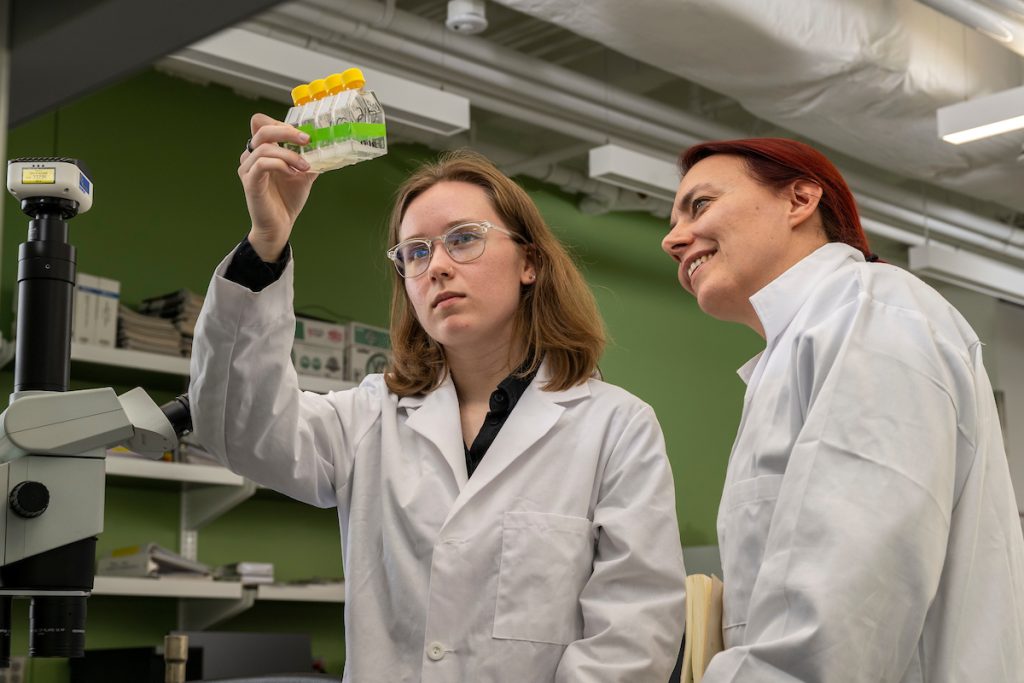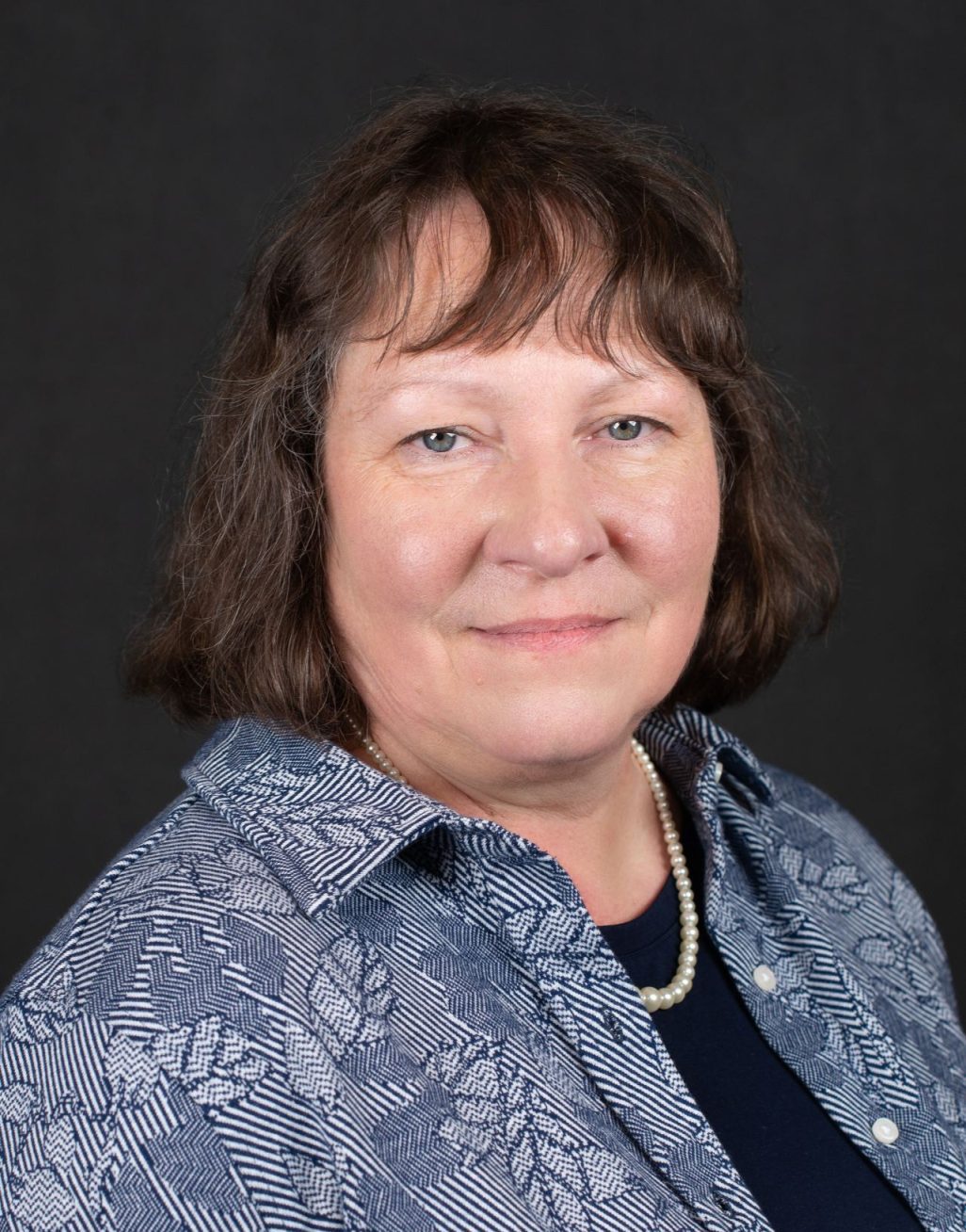Preparing students for success in their careers and lives, S&T is dedicated to enriching educational offerings, ensuring they align with the evolving needs of our students and the dynamic world around us.
We will develop and sustain innovative teaching methods, comprehensive review processes, and the relevancy of S&T’s curriculum. We are dedicated to evolving our general education, dual enrollment, undergraduate and graduate programs to meet the highest standards of educational excellence. We aim to create a learning environment that is both intellectually stimulating and aligned with real-world needs. We will provide pathways and delivery models that fit a diverse range of students.
Strategy Groups to Boost Academic Excellence
SFA,SG,T,Tactic,RP,Status,StrategyGroup,AP,SG_Status
3,1,1,^Design faculty-led processes to create and administer interdisciplinary programs across academic units.^, Stephen Raper,, ^Improve process related to academic programs and curriculum^, Stephen Raper,
3,1,2,^Ensure academic rigor and quality in all majors and programs to meet regional and professional accreditation standards.^, Stephen Raper,, ^Improve process related to academic programs and curriculum^, Stephen Raper,
3,1,3,^Implement HLC Assessment Academy as S&T’s Quality Initiative.^, Stephen Raper,, ^Improve process related to academic programs and curriculum^, Stephen Raper,
3,1,4,^Articulate program learning objectives and program learning outcomes for all programs/majors to help students make informed decisions about selecting courses and degree programs.^, Stephen Raper,, ^Improve process related to academic programs and curriculum^, Stephen Raper,
3,1,5,^Design a process to internally review the sustainability of all degrees and certificates by tracking their enrollments and graduation rates.^, Robert W. Jones,, ^Improve process related to academic programs and curriculum^, Stephen Raper,
3,1,6,^Update the process for external department reviews into a comprehensive process.^, Stephen Raper,, ^Improve process related to academic programs and curriculum^, Stephen Raper,
3,1,7,^Articulate course learning outcomes and document them in all syllabi and in the course catalog, and assess progress through S&T’s HLC Quality Initiative: participation in the HLC Learning Academy^, Stephen Raper,, ^Improve process related to academic programs and curriculum^, Stephen Raper,
3,1,8,^Ensure consistent web presence and appearance for academic programs and faculty.^, John Harris,, ^Improve process related to academic programs and curriculum^, Stephen Raper,
3,2,1,^Restructure the Center for Advancing Faculty Excellence (CAFE) in to support teaching excellence in all programs.^, Susan Murray,, ^Develop and enhance teaching and education excellence^, Susan Murray,
3,2,2,^Create CAFÉ training related to effective course and program assessment.^, Susan Murray,, ^Develop and enhance teaching and education excellence^, Susan Murray,
3,2,3,^Establish new teaching evaluations with the Committee for Effective Teaching (CET) (mid-semester and end-of-semester evaluations together with CET observations and the Peer Evaluation Team).^, Susan Murray,, ^Develop and enhance teaching and education excellence^, Susan Murray,
3,2,4,^Improve the graduate teaching assistant (GTA) training program.^, Susan Murray,, ^Develop and enhance teaching and education excellence^, Susan Murray,
3,3,1,^Plan and implement affordable dual enrollment offerings with high schools to strengthen the region’s college readiness, leveraging existing transportation options to Rolla.^, David Spivey,, ^Improve and develop general education curriculum and dual enrollment and transfer programs^, Stephen Raper,
3,3,2,^Develop a unified general education curriculum consistent with accreditation requirements and Missouri Core-42 guidelines with appropriate levels of student choice and ease of transferability.^, Stephen Raper,, ^Improve and develop general education curriculum and dual enrollment and transfer programs^, Stephen Raper,
3,3,3,^Develop methods to assess the general education curriculum and dual enrollment programs.^, Stephen Raper,, ^Improve and develop general education curriculum and dual enrollment and transfer programs^, Stephen Raper,
3,3,4,^Pursue partnerships with community colleges to facilitate ease of transfer for students with associate’s degrees.^, David Spivey,, ^Improve and develop general education curriculum and dual enrollment and transfer programs^, Stephen Raper,
3,4,1,^Diversify and update undergraduate programs through new emphasis areas, certificates, or concentrations.^, John Harris,, ^Develop and diversity undergraduate program offerings^, John Harris,
3,4,2,^Simplify pathways to graduation by applying the results of curricular analytics to prerequisite maps and modularizing courses and prerequisite chains accordingly.^, Stephen Raper,, ^Develop and diversity undergraduate program offerings^, John Harris,
3,4,3,^Using agreed-upon metrics from the program health dashboard, create, enhance, sunset, or redesign majors and/or programs.^, John Harris,, ^Develop and diversity undergraduate program offerings^, John Harris,
3,4,4,^Explore the potential for developing a more robust honors program to recruit, retain, and develop outstanding students.^, Leticia Steffen,, ^Develop and diversity undergraduate program offerings^, John Harris,
3,5,1,^Coordinate student marketing and pricing models.^, David Spivey,, ^Evaluate and evolve non-thesis master’s program offerings^, Susan Murray,
3,5,2,^Develop plans for face-to-face offerings of non-thesis master’s programs in St Louis.^, Islam El-adaway,, ^Evaluate and evolve non-thesis master’s program offerings^, Susan Murray,
3,5,3,^Evaluate the feasibility of moving non-thesis master’s courses to shorter terms (e.g. eight-week blocks).^, Susan Murray,, ^Evaluate and evolve non-thesis master’s program offerings^, Susan Murray,
3,5,4,^Develop new high-demand master’s programs.^, Debra Bourdeau,, ^Evaluate and evolve non-thesis master’s program offerings^, Susan Murray,
3,5,5,^Leverage or market appropriate 4+1 programs for non-thesis master’s degrees.^, Garry Grubbs,, ^Evaluate and evolve non-thesis master’s program offerings^, Susan Murray,
3,5,6,^Develop or adopt metrics to assess the need for new master’s programs and differentiate them from research graduate programs.^, Garry Grubbs,, ^Evaluate and evolve non-thesis master’s program offerings^, Susan Murray,
3,5,7,^Explore new options for professional master’s programs in order to diversify our offerings.^, James Sterling,, ^Evaluate and evolve non-thesis master’s program offerings^, Susan Murray,
3,6,1,^Grow marketing and recruitment of graduate students in established and new non-thesis master’s programs and research (i.e., thesis master’s and doctoral) programs.^, Garry Grubbs,, ^Evaluate and evolve research graduate program offerings (doctoral and thesis master’s)^, Garry Grubbs,
3,6,2,^Pursue dual PhD programs to attract outstanding PhD students and leverage shared funding programs.^, Kamal Khayat,, ^Evaluate and evolve research graduate program offerings (doctoral and thesis master’s)^, Garry Grubbs,
3,7,1,^Investigate, evaluate, and develop executive education and corporate programs and course offerings in the St. Louis area and investigate other potential locations.^, Islam El-adaway,, ^Develop plans for corporate education and periodic delivery online and in-person of short courses about speciality topics^, David Borrok,
3,7,2,^Establish a process for regularly seeking alumni and corporate input on new programs and course modalities based on market need.^, Debra Bourdeau,, ^Develop plans for corporate education and periodic delivery online and in-person of short courses about speciality topics^, David Borrok,
3,7,3,^Establish a cost model for executive and corporate educational activities, including the potential for compensation across college boundaries.^, Debra Bourdeau,, ^Develop plans for corporate education and periodic delivery online and in-person of short courses about speciality topics^, David Borrok,
3,7,4,^Set up a website for off-campus programming.^, Debra Bourdeau,, ^Develop plans for corporate education and periodic delivery online and in-person of short courses about specialty topics^, David Borrok,
3,8,1,^Develop funding models to ensure that academic priorities will be adequately resourced, including graduate student support, start-up costs, library needs, and additional teaching from other departments.^, John Harris,, ^Regularize transparent processes or academic resource allocation^, John Harris,
3,8,2,^Develop models to ensure campus-wide financial support for programs, including graduate student support, start-up costs, library needs, and additional teaching from other departments.^, John Harris,, ^Regularize transparent processes or academic resource allocation^, John Harris,
3,8,3,^Develop processes to match financial resources to fluctuations in numbers of majors, student credit hours (SCH) taught, and other program responsibilities.^, John Harris,, ^Regularize transparent processes or academic resource allocation^, John Harris,
3,8,4,^Develop a process for the distribution of named chairs across departments, including defined problem focus areas.^, John Harris,, ^Regularize transparent processes or academic resource allocation^, John Harris,
Goal Alignments
North Star Goal Alignment
Grow enrollment to 12,000 students; Achieve a top 100 ranking. Attain Carnegie R1.
Missouri Compacts Primary Alignment
Student Success; Engagement and Outreach; Research and Creative Works.
Strategic Team
Strategic Focus Area Leadership
John Harris—SFA Accountable Person
Provost and Executive Vice Chancellor for Academic Affairs
Petra Dewitt— Faculty Liaison
Associate Professor of History
Faculty Senate, Campus Curriculum Committee Chair
Strategy Group Accountable Persons
Islam El-adaway
Associate Dean for Academic Partnerships, College of Engineering and Computing
Garry “Smitty” Grubbs II
Vice Provost of Graduate Education
Susan Murray
Associate Vice Provost for Teaching and Curricular Excellence
Steve Raper
Associate Provost for Academic Operations, Accreditation and Assessment





